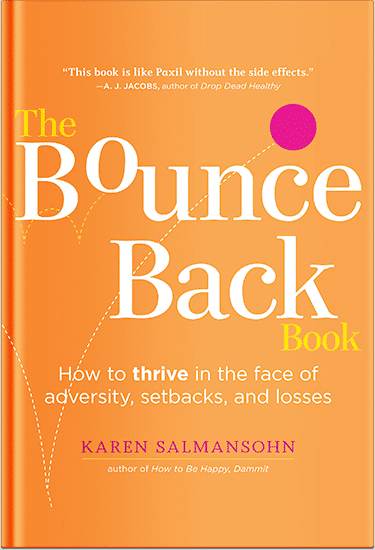 Discover the science behind student drive, from mindsets and goals to health and emotion. Learn practical tips that help learners persist, pivot wisely, and keep motivation alive.
Discover the science behind student drive, from mindsets and goals to health and emotion. Learn practical tips that help learners persist, pivot wisely, and keep motivation alive.
Everyone has watched a class respond to the same hard task in different ways. The instructor assigns difficult work, and some students lean forward with steady eyes and purpose. Others stare at the clock, feel pressure rise, and mentally exit before any effort begins. The split points to a deeper driver that shapes effort and choices.
Motivation steers behavior, from extra study hours to rushed shortcuts like buy a term paper during stress. Science shows that willpower does not spring from luck or mysterious forces. It grows from beliefs, emotions, and routines that people can shape with care. This article breaks complex research into clear ideas and direct guidance.
The aim is to help teachers, families, and peers support steady progress. By the end, grit and surrender look less like fate and more like skills. Anyone can learn these skills using simple steps practiced with patience and attention.
The Building Blocks of Motivation
Motivation rests on three parts that work together: value, expectancy, and context. Value means a reason the task matters in a student’s daily life. A math test linked to a future plan carries a stronger pull than a random quiz. Expectancy means the belief that effort will produce results worth the time. Students who solved tough work last week feel capable during the next challenge.
Context includes noise, hunger, clutter, glare, and constant pings from devices nearby. These frictions drain focus and make small tasks feel far heavier than they are. When value, expectancy, and context align, effort flows with less drag and delay. Remove one part and the system sputters like an engine missing fuel.
A child can love science and still stop when past failure dims belief. A teacher can adjust which lever to pull after noticing the weak link. Raise value, grow expectancy, or clear the space, and drive returns.
Intrinsic and Extrinsic Drive
Researchers describe two main kinds of drive that guide student effort each day. Intrinsic drive rises from curiosity, interest, joy, and a desire to grow. Students lean into tasks because the work itself feels engaging and meaningful. Extrinsic drive comes from outside rewards, praise, grades, and fear of penalties. Both can move behavior, yet they feel different in the mind and body. Intrinsic work usually sparks deeper focus and longer stretches during demanding tasks.
The reward lives inside the activity, so attention remains steady across time. Extrinsic prompts can help, especially for short jumps toward starting and finishing. The effect fades quickly once the sticker, points, or bonus disappears from view. Wise adults start with small outside nudges and guide toward inner reasons.
Over time, the outside push turns into an inside pull that lasts. Like training wheels, early rewards help balance until the rider finds steady motion.
How a Growth Mindset Fuels Persistence
Mindset often separates students who continue from those who shut down early. Carol Dweck’s work shows two common beliefs about talent and ability in learning. A fixed mindset treats intelligence as a set number that cannot change much. Mistakes become proof of low talent, and effort feels useless against hard tasks.
A growth mindset frames mistakes as signs that the brain is building strength. Practice and feedback do not yet turn into yes with steady work and strategy. Short lessons about brain plasticity can shift choices in middle school classrooms. Students who learn that neurons build new paths pick harder tasks over time.
They also recover faster after errors and earn stronger marks in future terms. Teachers help by praising process, strategy, and focus more than results alone. A class mantra like skills grow with stress keeps the message alive daily. When ability feels flexible, failure loses bite, and persistence becomes the next step.
Clear Goals and Self-Regulation
Motivation needs direction, or energy spreads thin and fizzles without clear targets. Specific, reachable goals beat vague wishes and keep attention on the next step. A plan like I will finish chapter three before dinner guides actions precisely.
Each small completion releases dopamine, which reinforces effort and strengthens habit loops. Students who self-regulate track progress, notice confusion, and adjust methods without delay. They break work into chunks, schedule breaks, and return with fresh attention after pauses. Tools like planners, timers, and color tabs make these steps easy to repeat.
Teachers can model self-talk that reveals thinking and method before reading or writing. Phrases like first I skim for headings show a path students can copy. Families can mirror these habits at home with visible calendars and checklists. When clear goals pair with monitoring, the route stays visible through rough patches. Progress builds, confidence rises, and motivation refuels after every small win.
The Power of Social Support
People are social learners, and effort grows inside caring, connected groups at school. A short, sincere comment from a trusted teacher can double study time tomorrow. Friends who meet for homework turn lonely grind into shared challenge and support. Even online study spaces create belonging and accountability that boost steady effort. F
amily help matters, yet tone and focus determine whether energy rises or drops. Praise that highlights strategy and effort builds grit and healthy pride in progress. Frequent threats, harsh comparisons, and sarcasm push students into defensive withdrawal fast. Role models widen belief about possible futures for students across different backgrounds.
Seeing someone similar succeed in physics or languages plants confidence that success fits. Schools can build peer tutoring, mentoring, and cooperative projects into weekly routines. These programs weave support into normal days rather than special events. Supportive groups lift motivation, while mocking peers drain energy before tasks even begin.
Emotions, Stress, and the Brain
Motivation moves inside emotion, not outside it, and stress shapes thinking in real time. Pressure activates the fight or flight response and floods the body with cortisol during stress. A small surge sharpens focus, while chronic floods fog memory and decision power. Students facing crowded schedules, family duties, or money stress often feel stuck. They want to work yet lack the mental space to begin and continue.
Positive emotion broadens attention and opens learning pathways for new ideas daily. Simple practices reduce stress hormones within minutes during busy school days. Deep breathing, brief walks, stretching, and mindfulness help calm the body and mind. Classrooms that allow movement, daylight, plants, and soft music create emotional buffers.
Teaching feeling words helps students name frustration early and ask for help sooner. Teachers can open class with a short joke or two minutes of gratitude. Small lifts add up, and mood balance protects the fuel tank for effort.
Habits, Energy, and Physical Health
Steady motivation is easier when the body supports the mind during daily work. Sleep, food, and movement serve as the maintenance team for attention and memory. Teens need about eight hours, yet screens and early bells cut that number. Short sleep slows reaction time, blunts memory, and worsens mood during hard tasks.
Balanced meals supply glucose, which the brain uses for clear thinking and focus. Skipping breakfast leaves many students foggy and distractible by midmorning classes. Movement sends oxygen to the brain and releases endorphins that improve mood. Even ten minutes of stretching or brisk walking can reset focus between tasks. Habits link these parts, so students rely less on raw willpower every day. Regular bedtimes, Sunday snack prep, and biking to school reduce small frictions.
Good routines free mental energy that shifts toward goals rather than constant decisions. Junk food and lost sleep punch holes in the tank and leak drive.
Practical Strategies for Teachers and Parents
Knowledge turns powerful when adults translate ideas into daily steps that students use. Offer meaningful choice within tasks, like topic selection or format for a project. Choice increases perceived control and invites ownership during the working process. Share clear rubrics that define success to reduce fear and guesswork about grading.
Give feedback quickly, describe behaviors, and connect comments to strategies and effort. Say your claim improved when you added data instead of empty praise lines. At home, set quiet study zones, model reading, and celebrate progress, not perfection. Hold a short planning session each Sunday to map the coming week together. Adults should watch their language and trade.
You are so smart because you worked hard. Build small celebrations, like a family movie after a difficult unit test finishes. Attach good feelings to hard work so persistence feels rewarding over time. These routines, repeated steadily, become guardrails that keep the effort moving forward.
Redefining Quitting and Crafting a Balanced View
Stopping a task does not always signal laziness, weakness, or a doomed future. Sometimes quitting is wise and frees energy for goals that fit better. The key lies in reflective quitting rather than impulsive escape from discomfort.
Reflective quitting uses values, costs, and growth potential to guide a decision carefully. Students pause, review options, and choose a path that matches worthy aims and limits. Reflex quitting happens fast, before learning begins and before strategies get tested. Teach students to insert a pause, then evaluate, then decide with clear reasoning.
Use a simple decision chart that prompts thoughtful steps before stopping work. Include prompts like consider whether future self will respect this choice later. Add prompts like list three strategies you tried before changing direction again. Mentors can model wise pivots by sharing personal shifts and the thinking behind them. Balance becomes the goal: hold firm when growth needs time, pivot when fit fails. Each path carries lessons that build maturity and sharpen judgment for future choices.
P.S. Before you zip off to your next Internet pit stop, check out these 2 game changers below - that could dramatically upscale your life.
1. Check Out My Book On Enjoying A Well-Lived Life: It’s called "Your To Die For Life: How to Maximize Joy and Minimize Regret Before Your Time Runs Out." Think of it as your life’s manual to cranking up the volume on joy, meaning, and connection. Learn more here.
2. Life Review Therapy - What if you could get a clear picture of where you are versus where you want to be, and find out exactly why you’re not there yet? That’s what Life Review Therapy is all about.. If you’re serious about transforming your life, let’s talk. Learn more HERE.
Think happier. Think calmer.
Think about subscribing for free weekly tools here.
No SPAM, ever! Read the Privacy Policy for more information.
One last step!
Please go to your inbox and click the confirmation link we just emailed you so you can start to get your free weekly NotSalmon Happiness Tools! Plus, you’ll immediately receive a chunklette of Karen’s bestselling Bounce Back Book!


 Discover the science behind student drive, from mindsets and goals to health and emotion. Learn practical tips that help learners persist, pivot wisely, and keep motivation alive.
Discover the science behind student drive, from mindsets and goals to health and emotion. Learn practical tips that help learners persist, pivot wisely, and keep motivation alive.